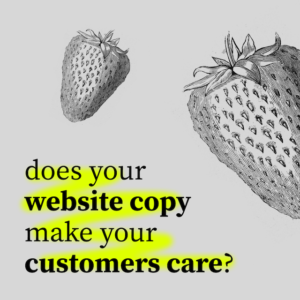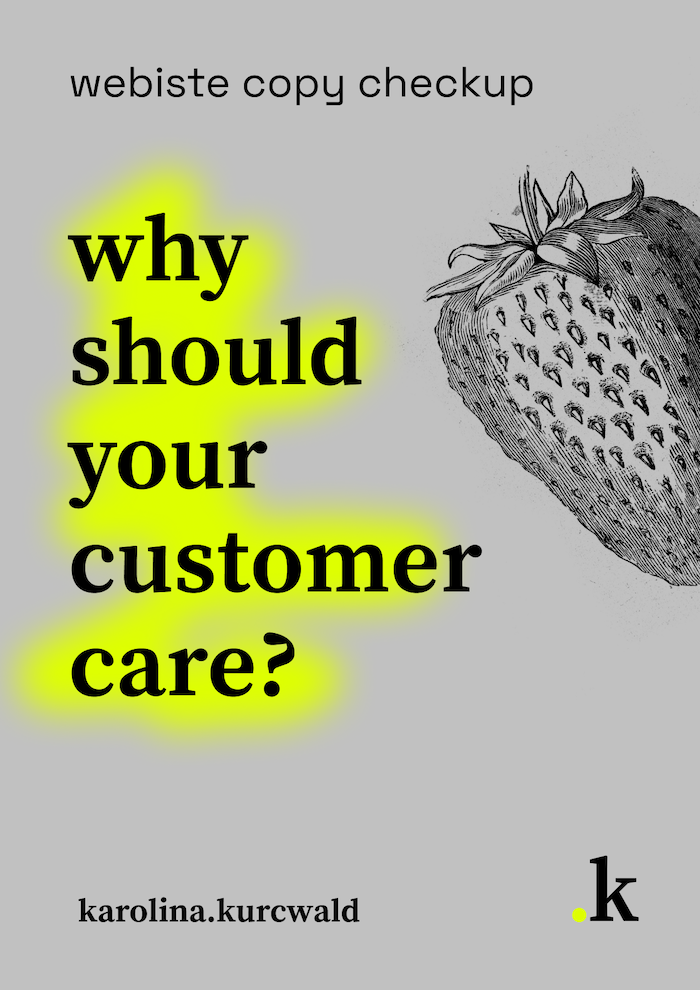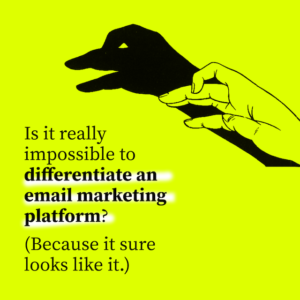

Ah, cold emails. We all get tens, maybe hundreds of them. And some of us send them daily. So why are there so few good cold emails out there? You know, ones you actually enjoy reading. Ones you act on – or at least remember them. I have an idea.
The problem with cold emails
There was a time I was not a great fan of cold emails. For me, they were like the epitome of the door-to-door salesman selling cleaner. You know, the one you don’t ever want to let inside.
But then I realized, I was not a fan of BAD cold emails – and most of the ones I’d seen were bad. Maybe all of them.
And not just because they were terribly written (a lot of them at least.) The problem was much more serious. Something that’s common across all marketing and sales tactics these days.
They were unhelpful.
And still are.
Sales pitches are not inherently bad. If you have something that can help people solve a problem, by all means, sell it. It’s how we earn our living.
But today, a lot of cold emails are not interested in that. They don’t seem to care about the prospect at all. All they want is for you to spend some of your (precious) time to listen/watch a demo, etc.
And that’s the problem.
Why on Earth would anyone want to give you their time if they can’t see ANY value in it?
The (I was about to write “trick”, but see, that’s the whole point. Sales is not about tricking people. At least, it shouldn’t be.) whole point is to show them the value. ASAP.
So how do you write a cold email that does just that?
The internet is full of best practices, how-to articles, and golden advice. And I don’t want to add to this. But what I really want to do is help you see what’s beneath – solving a real need.
Because I particularly hate cold emails that don’t care about the reader at all.
So, let me take one of those bad pitches that just landed in my inbox and break it down to show you:
- why it’s bad
- how to make it better
And since I don’t want to shame any brands or salespeople, I’ll leave out the details. But here’s what the email looked like:
Hi Karolina,
I found You on Linkedin and thought maybe You would like to know more about CompanyX – a [here’s what the company does] software.
We helped other e-commerce companies, similar to Your company to achieve better results. Here is a case study: [link]
Karolina, Maybe You would share some of Your time to learn more about XX in the presentation? Or you could just forward it to someone who is responsible.
P.S. Due to Covid-19 situation, use XX free of charge until the end of the year.
For clarity, let me wrap what I think in relation to a few basic elements that make up a (good) cold email.
Guidelines for writing cold emails that don’t suck
First off, do the research
This one should be obvious (like so many other things that unfortunately are not.) And I sometimes can’t believe I gotta say these things. But having worked in marketing for so long, I know I do.
Make sure the people you’re sending your emails to are actually your target customers.
And it’s especially important when you’re sending cold outreach. Because a lot of it is about making the prospect feel like you know what they’re about. Which is NOT the case if you’re sending your emails like you literally don’t care.
The email in question said:
We helped other e-commerce companies, similar to Your company to achieve better results. Here is a case study:
Case studies are great. Especially when they’re on point. And studies show marketers love them.
But what use do I have for an e-commerce case study if I’m NOT an e-commerce company? Not even close.
It basically makes the whole email pointless, and we could stop right there. But since I’m interested in dissecting it to make a point or two, let me continue.
Then choose the right cold email subject line
Your subject line’s only job is to get people to open your email. And you can write an awesome cold email, but it will be lost on your prospects if the subject line doesn’t live up to it.
There’s a whole science behind writing subject lines, and I’ll probably write a separate piece about it one day.
But today, let me focus on that one email subject line, which said:
Fwd: Your company + XX
(XX is the name of the company)
There are a few things wrong with this subject line.
- Fwd: (just like Re:) has been used to trick people into opening emails, and has seen its share of success. But again, that’s the whole problem – you’re tricking people, and you’re doing it right at the start of your relationship. Not exactly what I’d call a great first impression – even if they do click and open it.
- And the rest of it? Basically just tells me it’s a cold email. Gives me no value (or a hint of it.) Doesn’t stand out (except for the Fwd:, which I’d definitely notice.) Tells no story. Does. Nothing. K, bye.
But, of course, for the purposes of this article, I’ll move on to the next thing.
Don’t overlook the hook (a.k.a. the opening line)
Just as your subject line is there to make people want to open the email, the first line is there to make them want to read on.
Let’s see the first line here:
I found You on Linkedin and thought maybe You would like to know more about CompanyX – an [here’s what the company does] software.
Does that make you want to read on?
Thought not.
I mean, how did you find me? And why would you think I’d like to know more about your company? It doesn’t make much sense to me – the sole fact of finding me on LinkedIn is not a good reason to pitch me.
There’s absolutely no reason for me to get interested. The first line is wasted with the same thing most salespeople say in their cold emails. It doesn’t make a connection. Instead of getting me to scroll, it makes my eyes roll. (Rhyme unintended.)
Let’s move on, then.
Then, include the (real) benefit
Hello?? Benefit?? You there??
Anybody home??
And I mean a specific benefit I could relate to. (Achieving better results is not really one. What results? And how?)
Nothing to see here.
So let’s move to the last one.
The call to action
Another thing that can go wrong with a cold email? Leaving your prospects hanging, not really knowing what to do (or making it too much work to figure it out.)
The action at the end should be simple and obvious and need minimum effort.
Like choosing a time to talk by clicking a calendar link. Or answering a simple question (that can’t be answered with a “no”.)
If you’ve got your cold email right, your prospect should be so interested by now they’re willing to take that action. Obviously not the case here.
Because…
Karolina, Maybe You would share some of Your time to learn more about XX in the presentation? Or you could just forward it to someone who is responsible.
This call to action? It’s not even interested in making me take any action. Maybe I could share some of my time (which I won’t because I can’t see a single good reason to do that.)
Maybe I’ll forward it to someone, sure.
Maybe not.
P.S. – The P.S.
The PS is a great tool to use in emails. Research shows people read it. Some argue it’s the first thing people read (and sometimes the only one.) And in this email, the P.S. might be the only thing that could actually work:
P.S. Due to Covid-19 situation, use XX free of charge until the end of the year.
Maybe if it were a little more personal and human (given the fact it’s related to the pandemic), and sounded like an offer just for me.
Maybe if that email wasn’t already lost on me, because of all that’s before it.
Maybe.
(Du du du du. Ugh, I hate that song.)
Don’t send bad, unhelpful pitches in cold emails
You’re visiting somebody’s inbox. Please don’t let that be a waste of their time. It’s not a nice thing to do.
P.S. And let me know if you need help writing a better sales pitch.
Got time to read more?

Download my website copy checkup and see if the copy on your website talks about what really matters to your customers.
see if they care →


